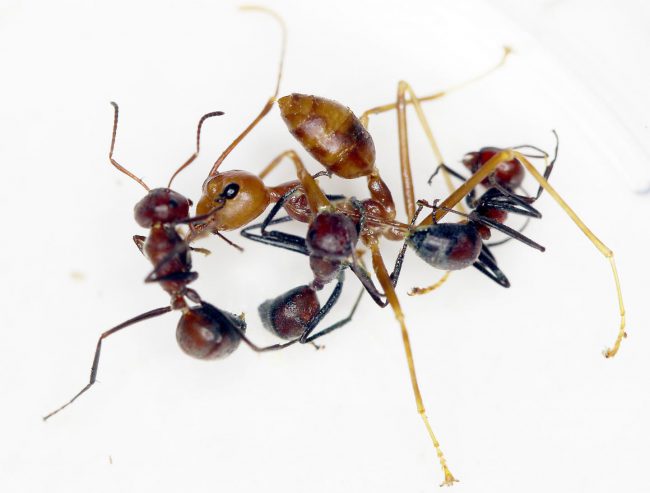Ants are renowned for their remarkable ability to organize themselves into complex societies, complete with divisions of labour and strict social hierarchies. Among the key groups in ant colonies are worker ants, which are typically tasked with foraging for food, constructing and maintaining colonies, and taking care of the queen ant and her brood.

But when it comes to going above and beyond in the quest to protect ant colonies and their inhabitants, few ants — indeed few creatures in the natural world — can match the commitment of the exploding worker ants of the newly discovered Colobopsis explodens species in Borneo.
These worker ants include a caste of so-called minor workers which, when confronted by invading insects, will split their own stomachs open while latching onto the invaders, splattering them with toxic goo.
READ MORE: ‘Exploding beetle’ makes its escape by inducing vomiting in toads
The sticky, yellow substance either kills the intruders or repels them just enough to render them unable to get past the larger “major worker” ants who guard the entrances to the nest.
The suicide attack kills the minor workers, whose valiant acts of martyrdom help maintain the long-term survival and viability of the colony.

But this unique form of defense isn’t quite as visually spectacular as the term “explosion” might suggest, according to Alice Laciny, lead researcher of the group that described Colobopsis explodens in the journal ZooKeys.
The minor worker ants aren’t capable of reproducing, so their self-sacrifice is their way of contributing to the preservation of their colonies’ genes.
“This tactic is very rare and especially known from social insects (some bees, termites), where the individual also has a genetic benefit from protecting its relatives in the colony,” Laciny said.
“The exact mechanism of caste determination is still to be studied. We suspect environmental factors during development — larval food, duration of the pupal stage — to play a role.”

Exploding ants were first mentioned in the scientific literature over a century ago, but the myriad challenges of tracking and studying ants in the rainforest meant that the species couldn’t be studied in more precise detail until a few years ago, Laciny said.
After years of tracking and studying ant colonies in the humid jungles of Southeast Asia, Laciny and her colleagues identified some 15 distinct species of exploding ants, with the canopy-dwelling Colobopsis explodens singled out as the prototypical species of the group, meaning it will serve as a reference and comparison point for future research into exploding ants.
READ MORE: ‘Punk’ turtle that can breathe through its genitals put on endangered species list
The discovery of Colobopsis explodens marks an early milestone in the inquiry into the fascinating world of exploding ants, Laciny said.
Findings about more species, as well as details about the ants’ behaviour, anatomy, evolution and the chemical composition of their weaponized goo, are set to be shared in the near future.




Comments